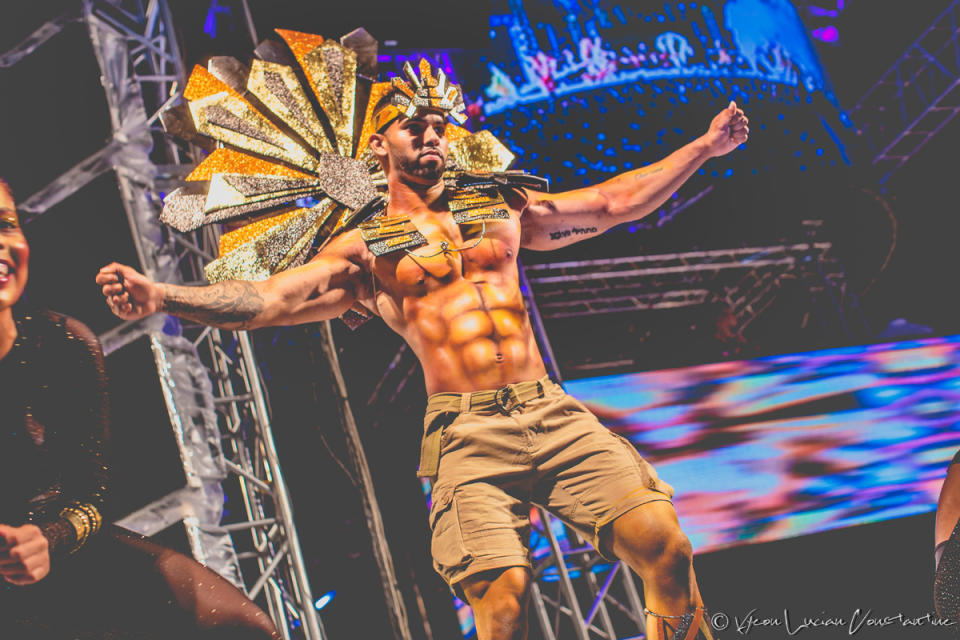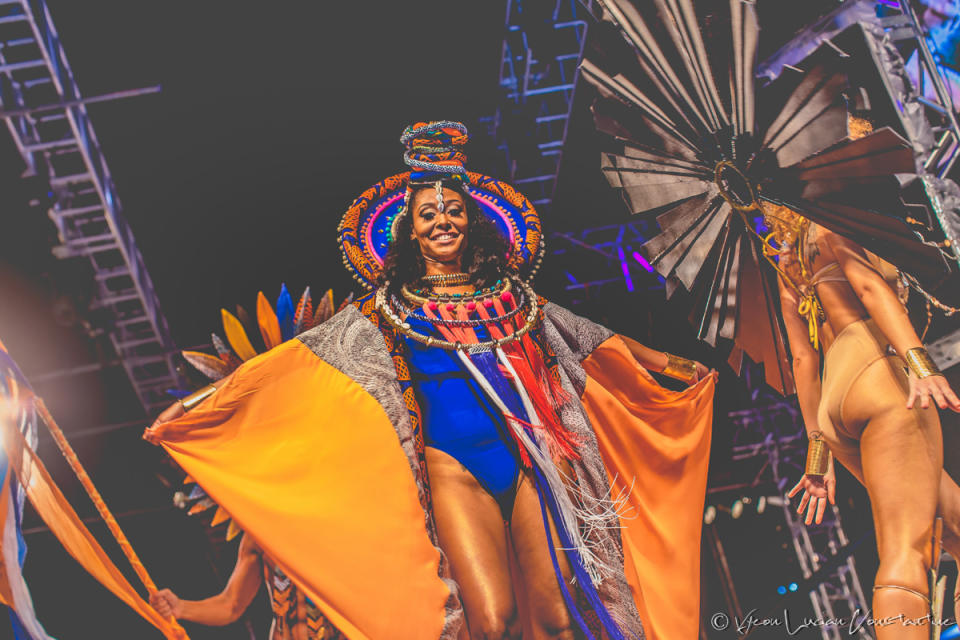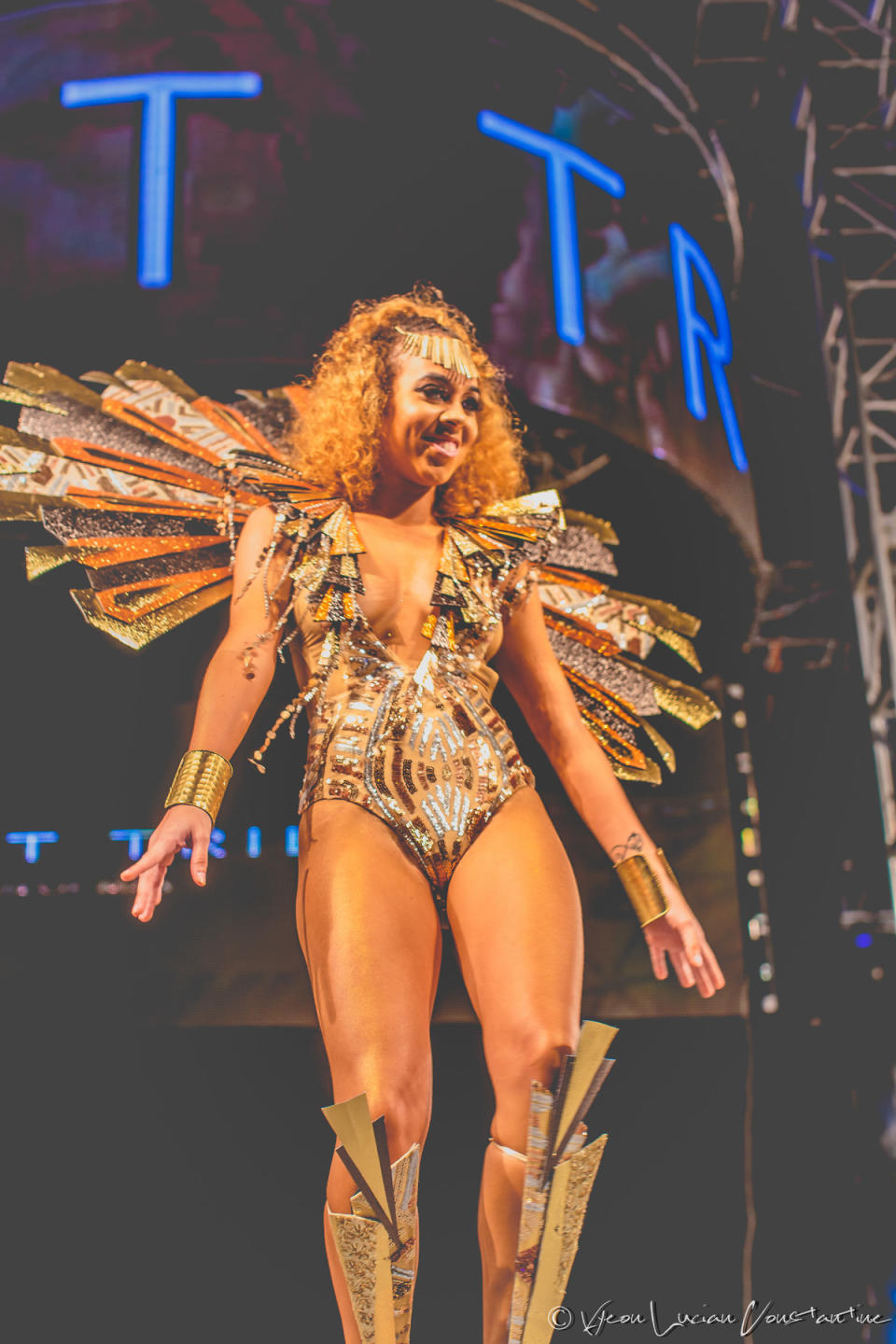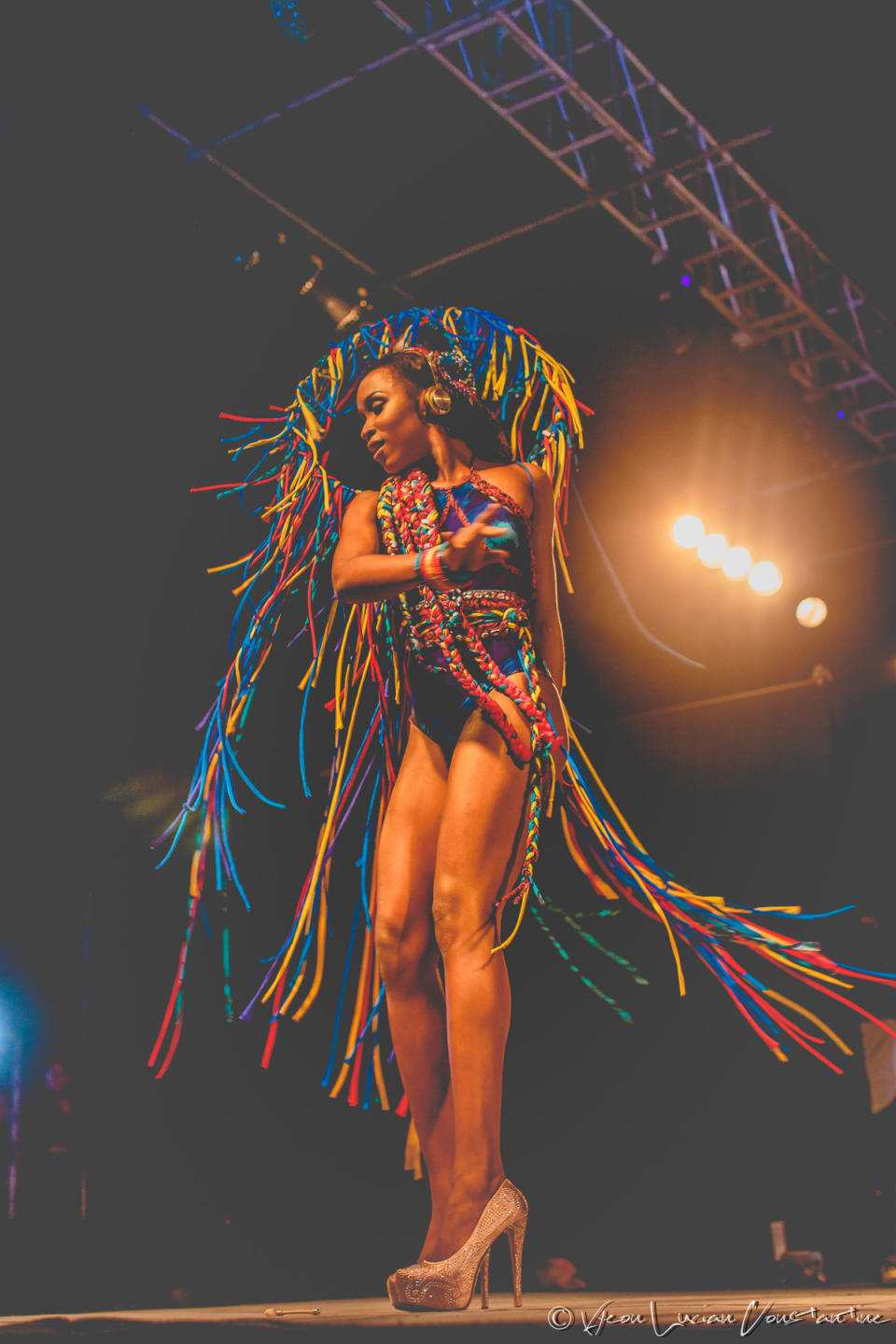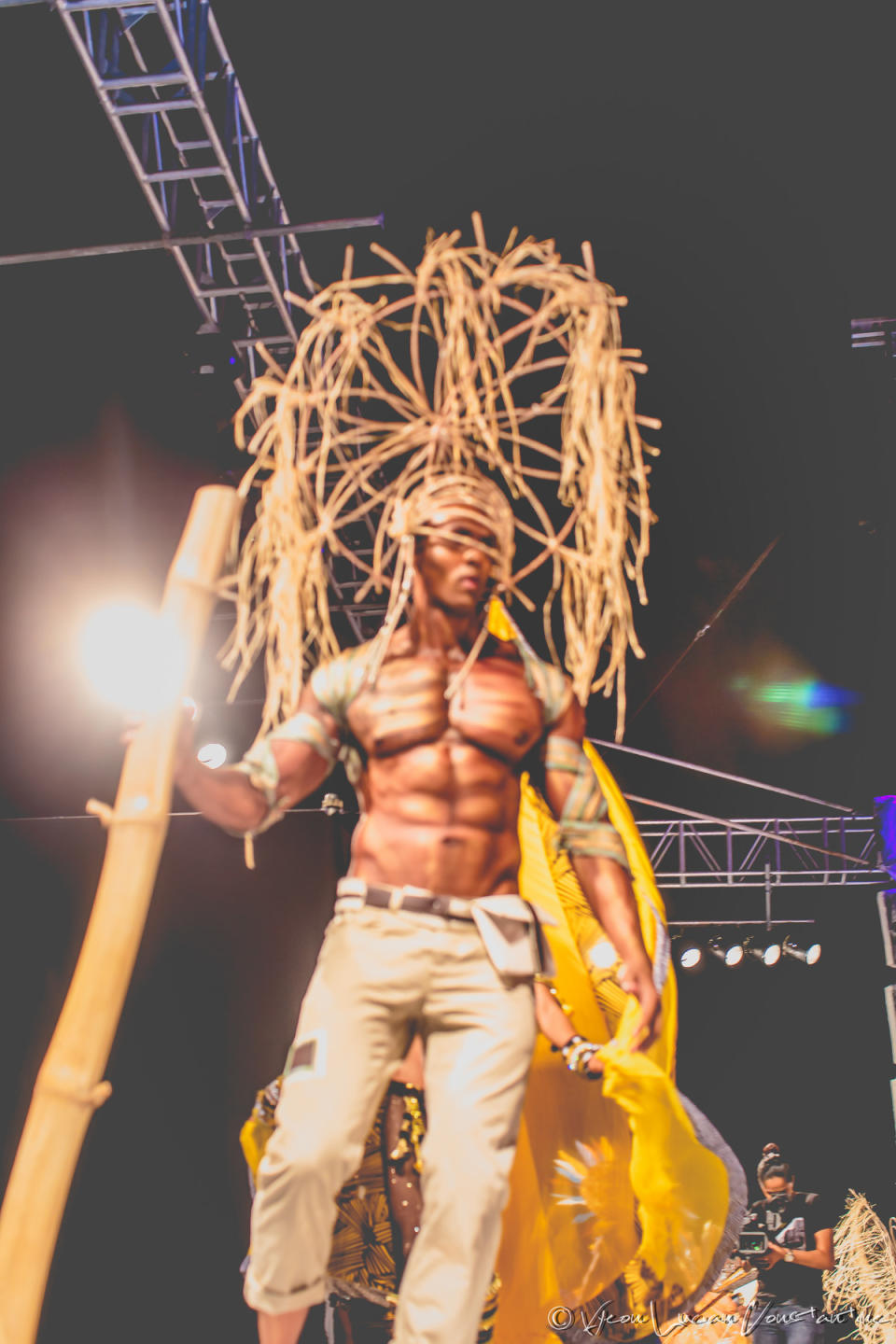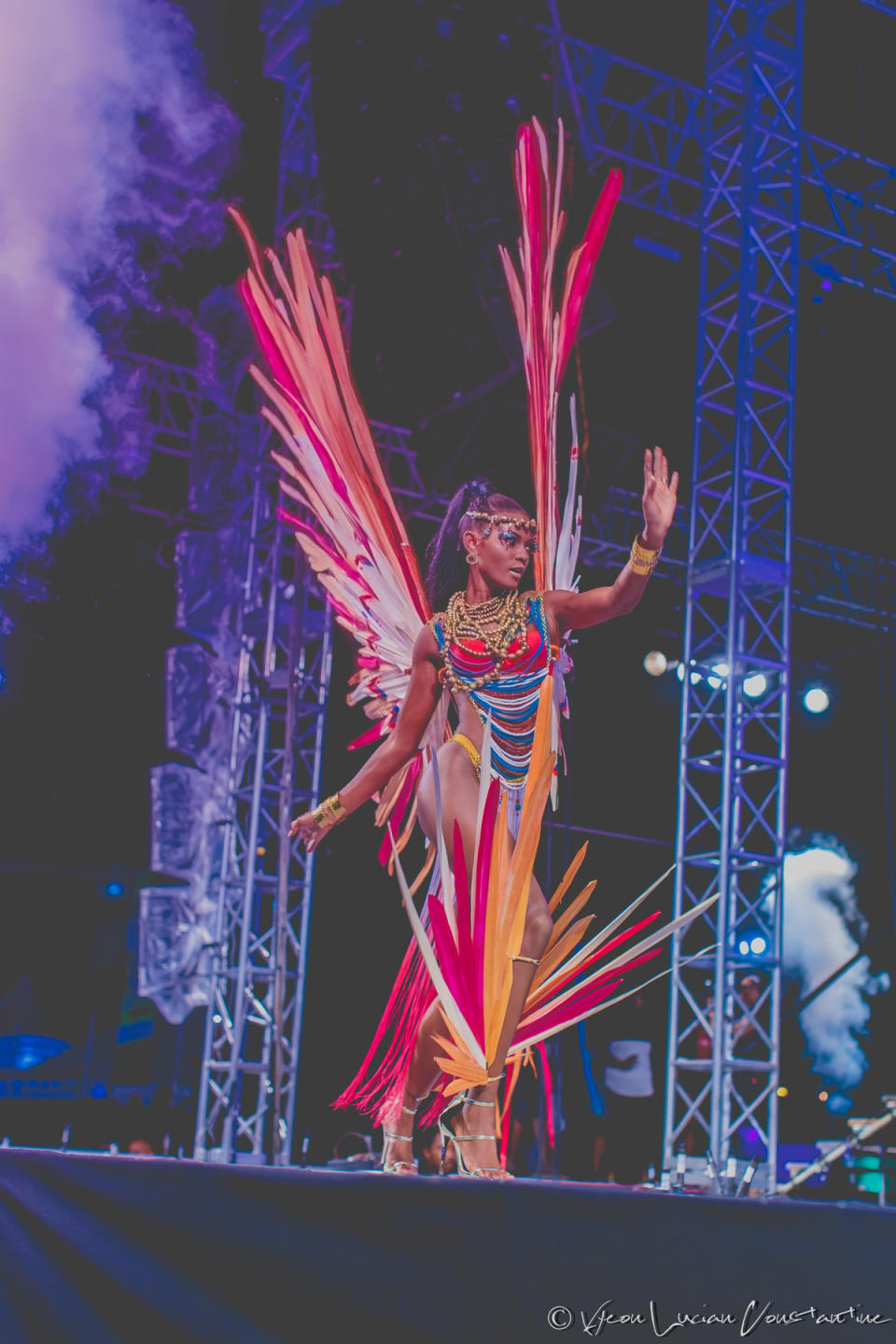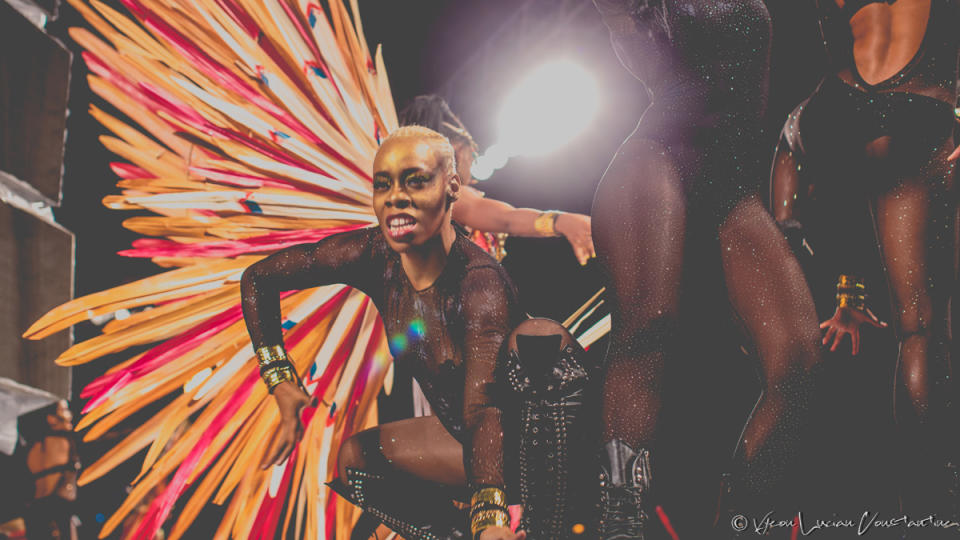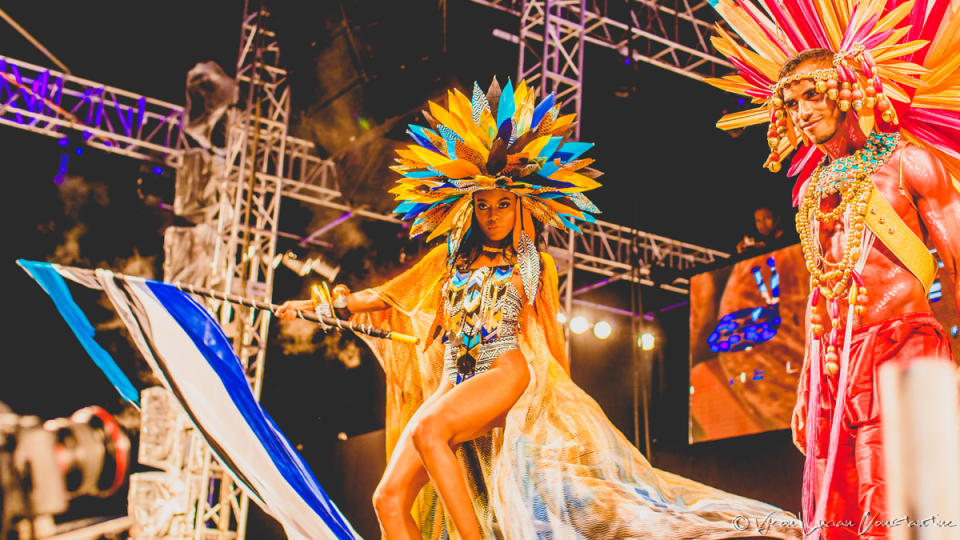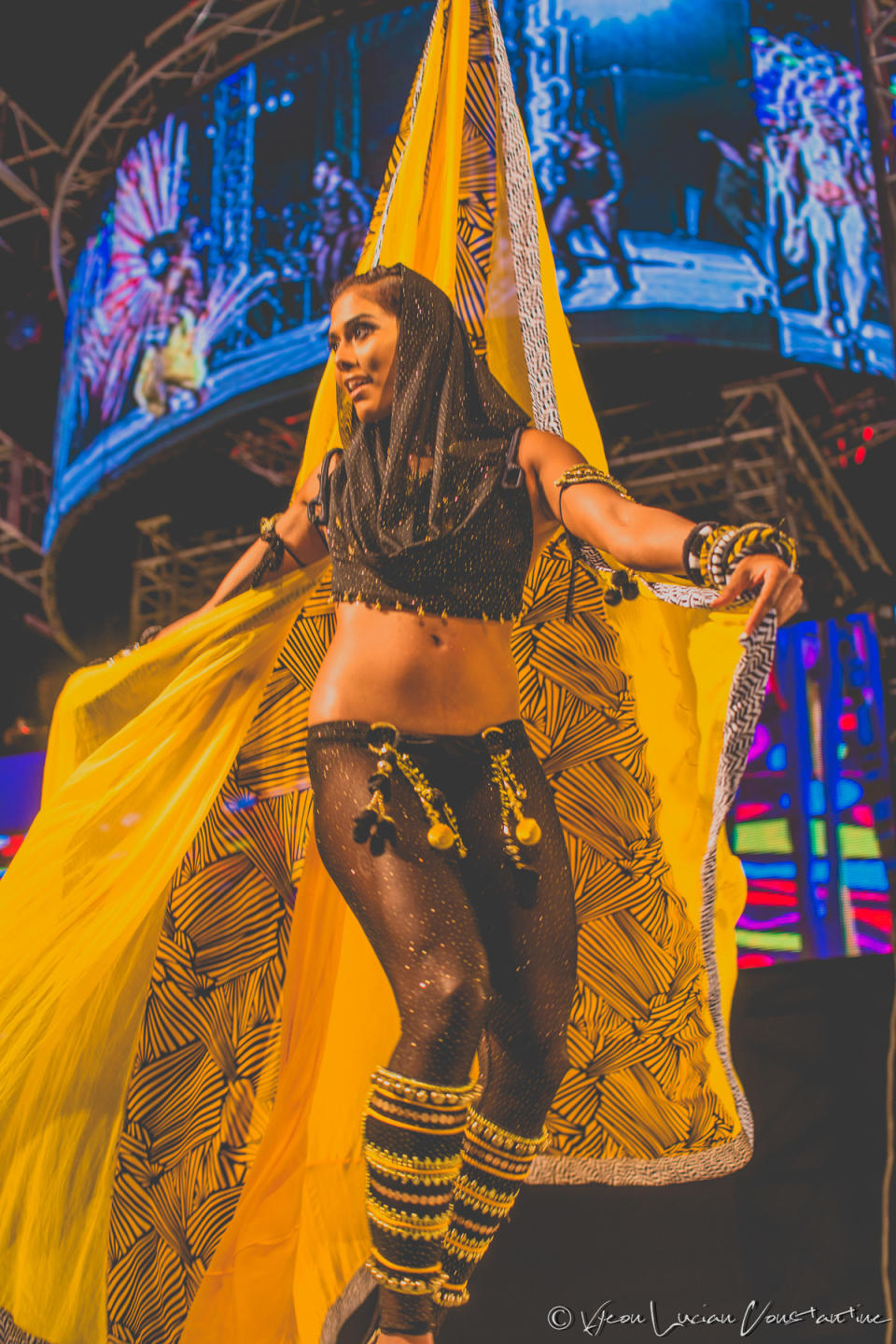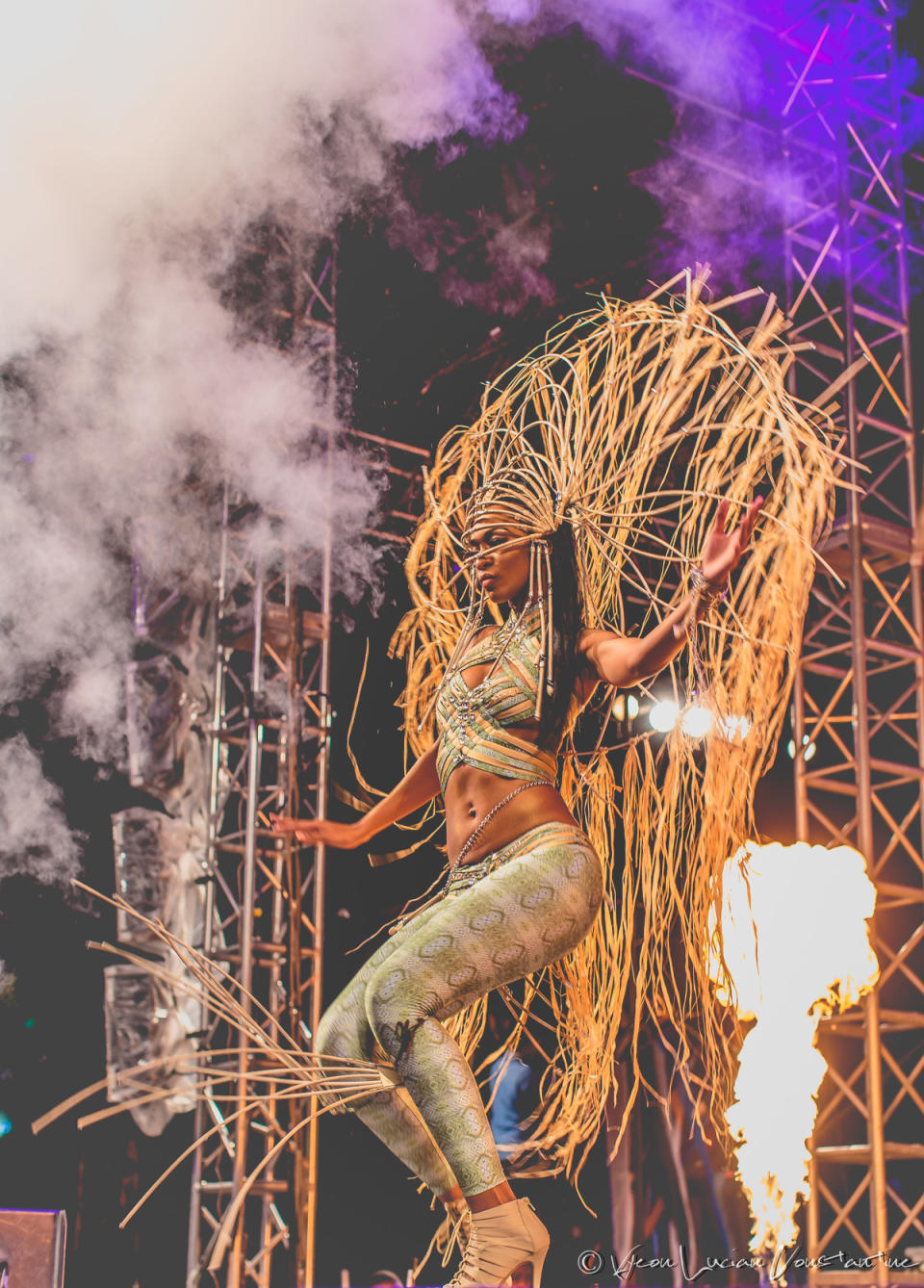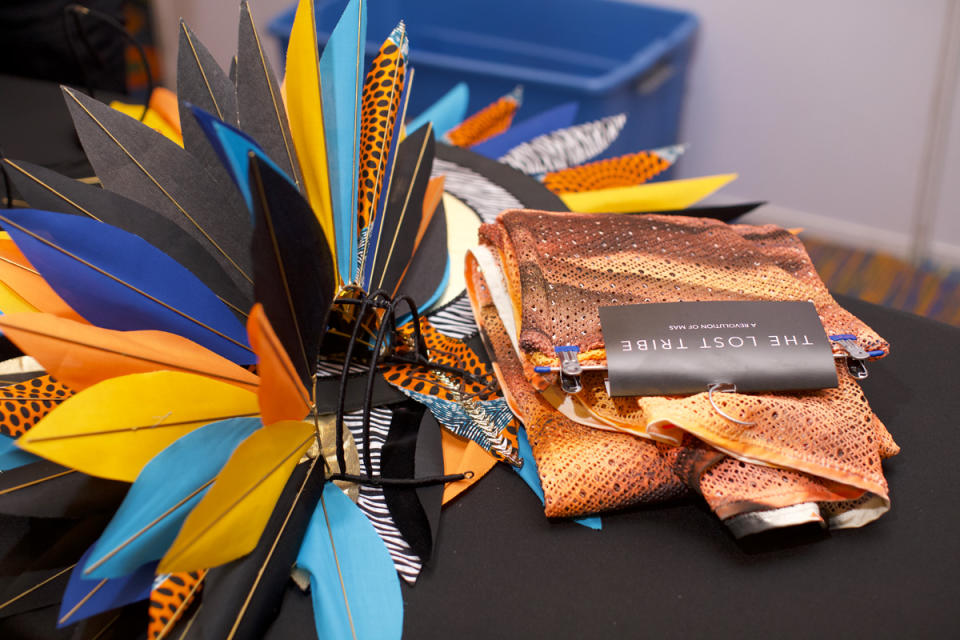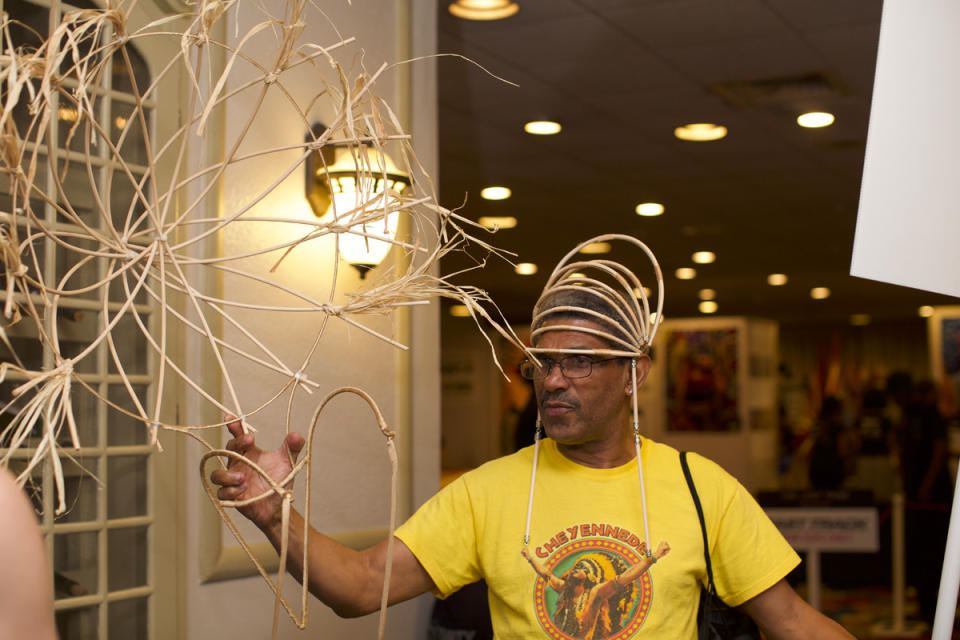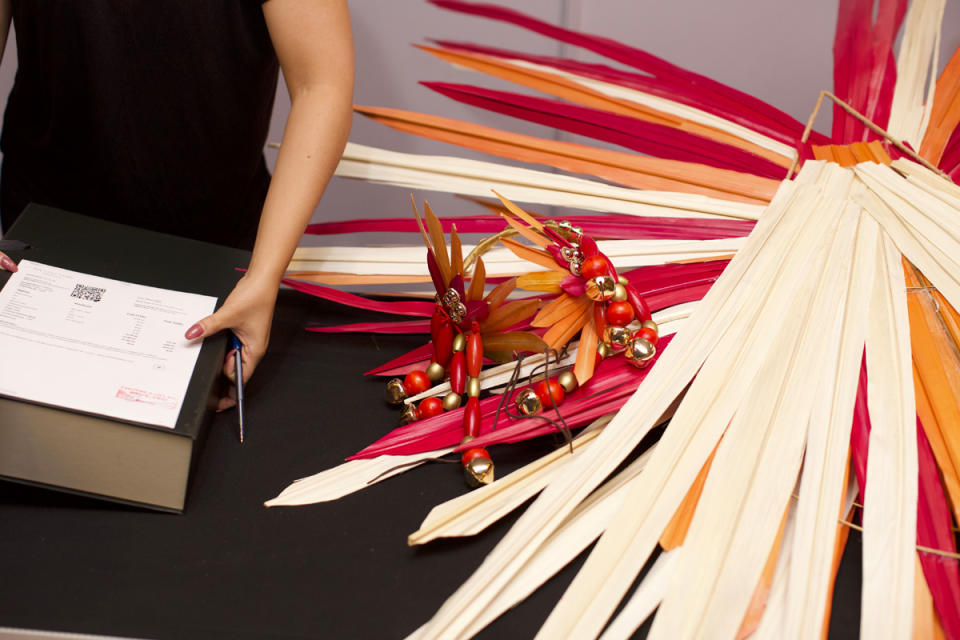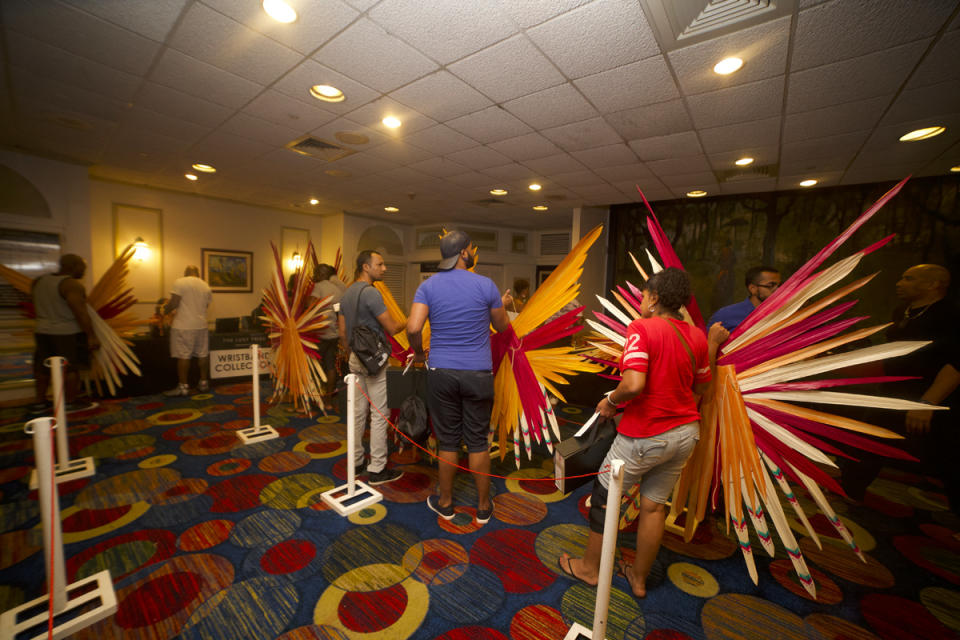These Carnival Costumes Have the Best Message: ‘You Are Beautiful, You Are Sexy, You Are Gorgeous’
Carnival in Trinidad and Tobago — falling this year on Feb. 27 and 28 — is known for the throngs of masqueraders who take to the streets to parade in flamboyant, expensive, sometimes feather- and sequin-laden costumes. It’s a beloved spectacle for which the pair of Caribbean islands is known, and an important part of the culture.
And everything about the elaborate getups — from creating them to moving through the day in one of them — is an art form that takes much forethought. “At the end of the day, a costume is an outfit,” Valmiki Maharaj told Yahoo Style in the days leading up to Carnival. He’s the executive creative director of Lost Tribe, a 2-year-old Carnival “band,” as a group of marchers joined together by a costumed theme is called. And while the band’s theme may vary from year to year, he says, it’s always meant to bring out the beauty in all participants. “When you wear something, you should be dressing for your body. You should not be dressing for what you think you want to look like,” Maharaj continued. “You are beautiful, you are sexy, you are gorgeous.”
The celebration of Carnival is one that comes before the Catholic observance of Lent, much like Carnival in Brazil (also happening this week), and Mardi Gras in New Orleans. Its roots can be found in the traditions of the islands’ French colonizers, but the festivities were adopted by Trinidad and Tobago’s African-descended people after the Slavery Abolition Act of 1833. They added their own traditions over the years, resulting in modern times as a wonderful display celebrating the nation’s rich history and its diverse people. The dayslong celebration, powered by the calypso and soca music, and steel-pan rhythms native to the land, is full of tradition, competition, and “Trinbago” culture.
In the costumes of the masqueraders — who “play mas” by registering with a band — you can see influences from the country’s Indigenous, East Indian, and African-descended populations in all manner of dazzling, dramatic fare. And the way that’s reflected has evolved over time. Along with the ensembles that have become an established and storied part of tradition, there are certain silhouettes, characters, and aesthetics of the costumes that have gone in and out of style over the years. But the elaborate, dramatic nature of the outfits remain the same — and putting them together is definitely a tall order.
Still, it’s one that Maharaj executes with grace. He spoke with Yahoo Style about what it takes to create a stellar costume, and his vision behind Lost Tribe’s 2017 “riddim” theme, which was created with Trinidad and Tobago’s rich culture in mind — and as a way to represent all the nation’s cultural influences, different though they may be, to reflect one beautiful identity.
Yahoo Style: What inspired this year’s set of costumes?
Valmiki Maharaj: Our history itself. This year, the theme is “riddim” (rhythm). We’re designing the sound of Trinidad and Tobago … through the most iconic rhythmic elements we have in Trinidad, which is the Laventille rhythm section. The rhythms that are played on the drums and the building of the drums themselves are uniquely Trinidadian and have been inspired by the Indian culture, Arabic/Middle Eastern culture, Chinese and Asian culture, and the African culture in Trinidad and Tobago. We were able to build a band and a design so that one costume would not be innately African alone — you would see elements of the other cultures in it.
The Cutta costume for example, draws from Middle Eastern and Indian design aesthetics. But we use African fabrics for it… and styled it a little differently because of the leggings and the hood. I call that my “Amber Rose” of Carnival this year. With the Bamboo costume, the weaving patterns on the back are very reminiscent of our Amerindian heritage, but the way JP Richardson designed the costume, is very Asian inspired, also. What we try to do as well is use alternative materials in such a way to be able to inspire the designers a little bit more. So you will see, JP used the bamboo, and in the Arieto costume, they used a lot of dyed leaves.
[In general], inspiration, for me, comes from fashion trends, from my travels, from colors — but the biggest inspiration to me is the masqueraders themselves. I spend lots of time talking to masqueraders, observing them on the road, seeing how they move. A costume has to be wearable. We’re not designing it for you to leave in your bedroom at home, or throw on the side of the road after you cross the stage. I want you to wear it all day. I want you to enjoy wearing it.
So how does a Carnival costume go from concept to reality?
On one side, you have those like myself who when you’re inspired, you sketch first, and then that leads to getting materials and so on and so forth. We mainly go to New York for materials. Some people do the opposite. They get inspired by the materials and then they put them together, so they will get beads and sequins and so on. They start to play with them, the shape, the movement, and from there the look develops. Both those methods work, but to each his own.
How have Carnival costumes evolved over the years?
When Carnival started, we had characters that came directly from the pages of our history books. Then from that, you had bands that were inspired by, well, art reflects life. Peter Minshall [a Carnival costume designer who rose up in the 1970s] affected the entire industry. Minshall was pop culture at the time — if you were anyone in society playing mas, you were playing mas with him. Many years later, it turned into [legendary bands] Poison and Barbarossa, which was the beginning of the bikini and bead mas days. Then the Tribe band was born… and came up with the concept of a fully all-inclusive band, which tapped into something different. Now, you have a group of consumers who look at [Carnival] as a tourism product. They want something that is on par with a cruise. We took that and ran with it.
What’s the Lost Tribe aesthetic?
A lot of different bands were designing the same type of costumes over and over. We sought to innovate and present something that was nostalgic and reminiscent of something that we had seen, but at the same time, combine the best of yesterday with the services, quality, and vibe of that Tribe road experience. There is a certain ethnic feel the band has had for the past two years – that is solely because of the particular themes we have started from. Next year, we are doing something that is totally off that beaten path, and something that is way more international theater than local patterns.
You’re already looking to next year! What’s the costume-making schedule?
In theory, we start a year and a half in advance. But it also, in certain situations, starts way before that. From one Carnival to [the next] technically isn’t a full year. We [reveal the costumes] in July, which is only six months from the Carnival itself.
What are some of the main challenges that come with designing for such a range of masqueraders?
Trinidad is in an economic crisis right now, so the main one would be the cost. We have to try to find a way to give the masqueraders what they want, with it being as affordable as possible [this year’s costumes hover around the $700 range]. Another one would be wearability. Like any fashion designer, you’re influenced by trends, but at the same time you want to give them something that they want. During Carnival, particularly, everyone wants to be a Victoria’s Secret model, but you need to find ways to make it accessible to everyone and design a costume that everybody will love, but also feel comfortable in. … We try to design all the bands with a variety of options. For example, one section will have the wire bra, while another will have a monokini section. Some will have thicker sides, some will have a body chain. In the end, we design across the board to have something to please every masquerader.
Related:
The Best National Costumes From the Miss Universe Pageant
Lady Part Costumes Ruled the Women’s March
Follow us on Instagram, Facebook, and Pinterest for nonstop inspiration delivered fresh to your feed, every day.
